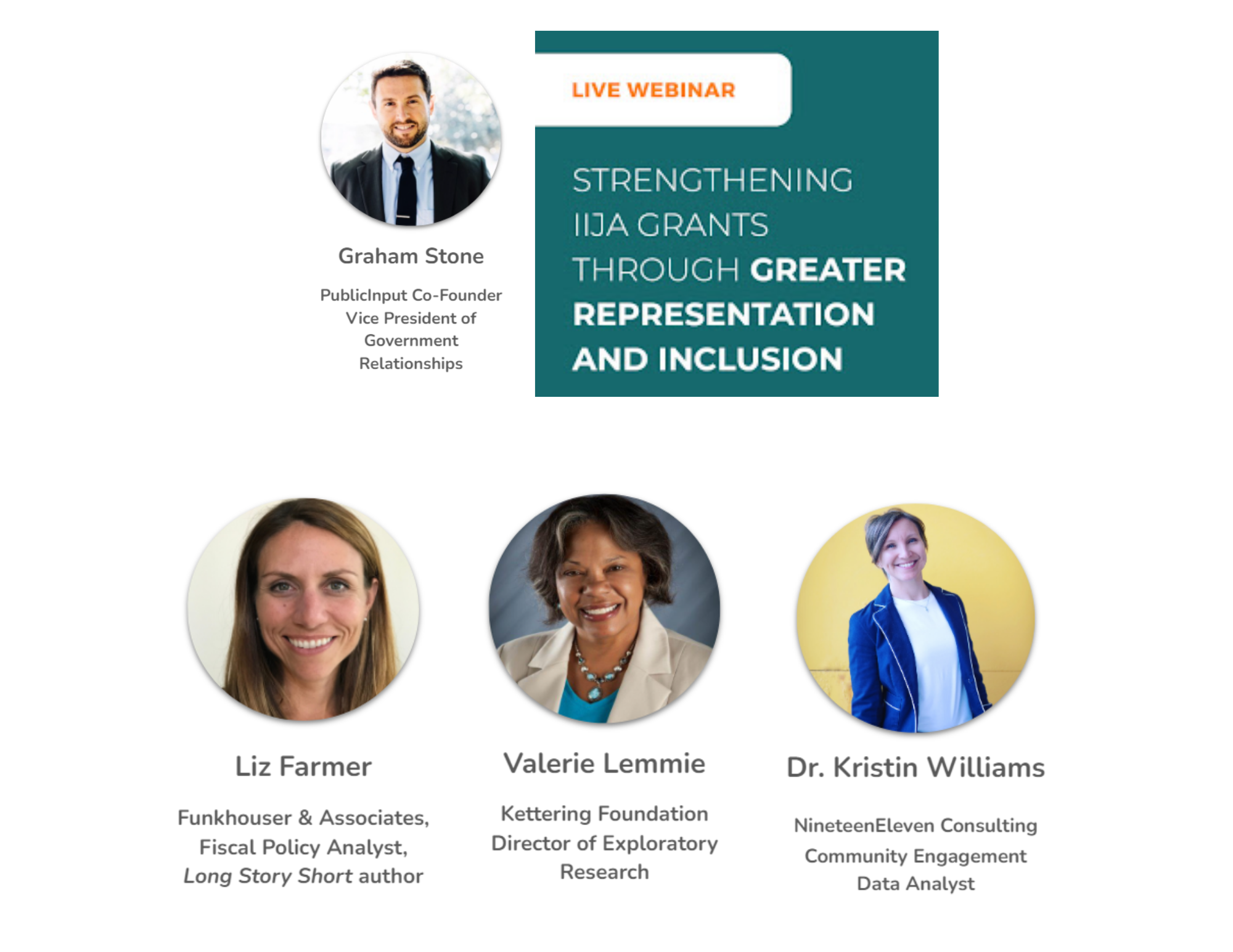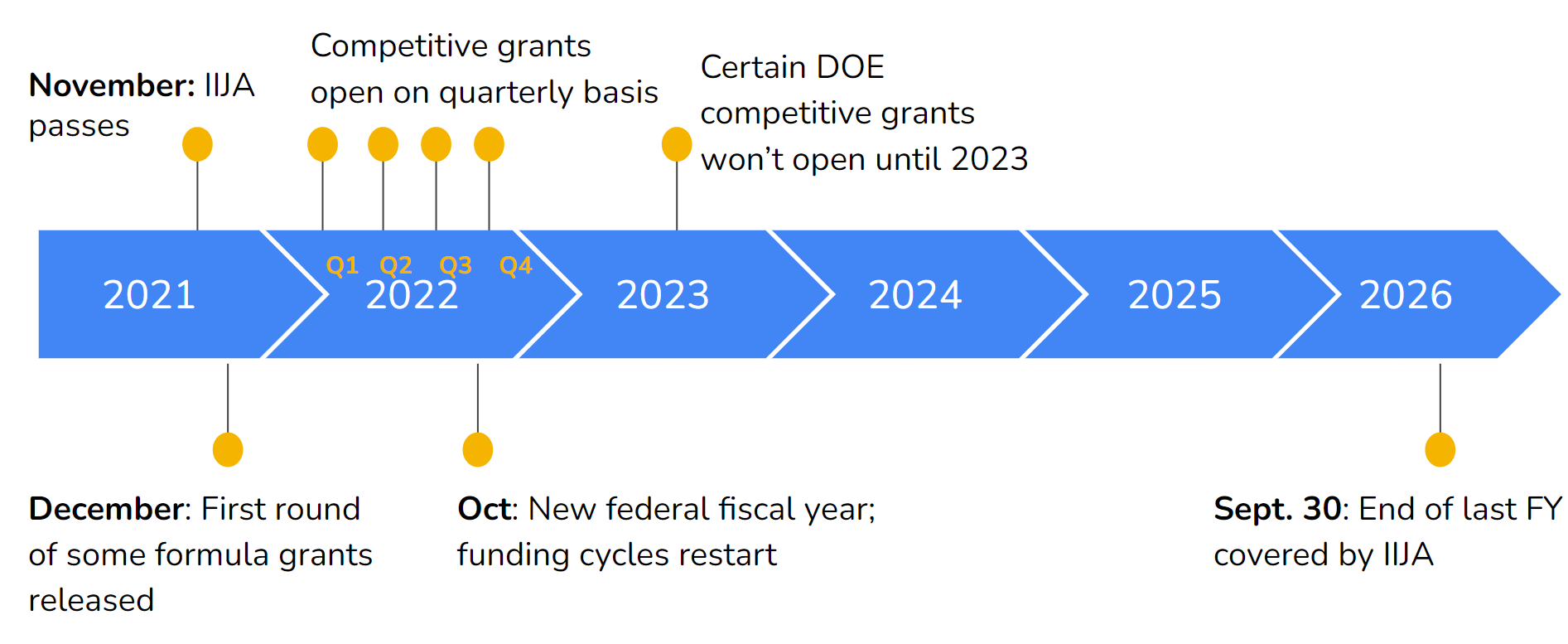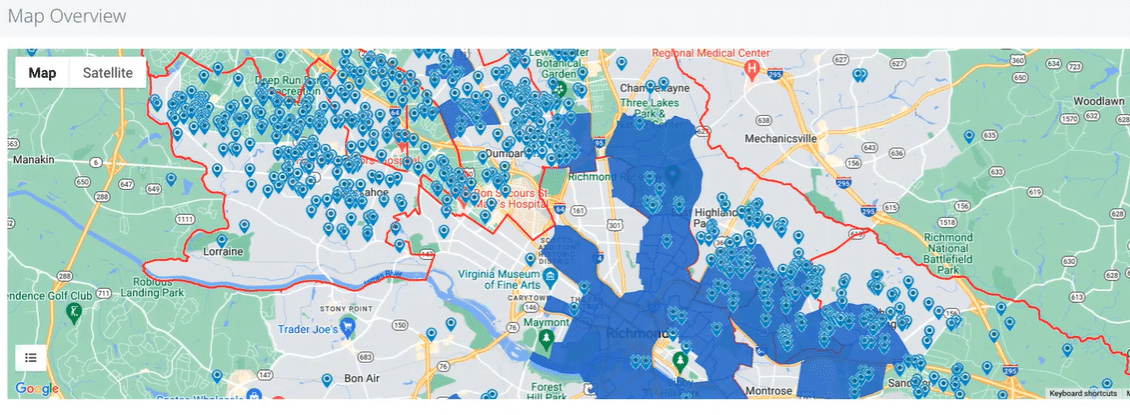Strengthening IIJA Grants through Greater Representation and Inclusion
PublicInput had the pleasure to convene a panel discussion concerning how local governments can use greater representation and inclusion to strengthen infrastructure grant proposals for federal discretionary funding.

Session Highlights
Moderated by our very own, Graham Stone, the panel of experts shared their unique perspectives on how local governments interested in Bipartisan Infrastructure Investment and Jobs Act (or IIJA) funding would be impacted by the White House priorities around equity.
IIJA Federally Funded Programs
Liz Farmer, Fiscal policy expert and consultant at Funkhouser & Associates
Federal funding programs are established by legislation approved by Congress. The current legislation is called the Bipartisan Infrastructure Investment and Jobs Act (IIJA) and was passed into law in November of 2021.
With competitive discretionary funding opportunities ongoing over the life of the program, Ms. Farmer emphasized that local government’s need to “start now in thinking about how to prepare your community to respond to these competitive grants.”
“Have ready answers to the critical three E’s, engagement, equity, environment and evidence.” –Liz Farmer

Greater Equity and Engagement
Valerie Lemmie, Director of Exploratory Research at the Kettering Foundation
Answering the question, “is a better relationship possible?” Ms. Lemmie set the stage for how the perceptions of the community influence the effectiveness of government.
Many Americans feel powerless to influence, affect, or even communicate, not just with governments but with many large governing institutions. This sense of powerlessness brings with it frustration and anger. For some time, citizens have felt relegated to the sidelines, where they sit uncertain about their ability to make a difference in their own democracy. We need all of our governing institutions working effectively to deal with crises like the coronavirus pandemic. They can’t do that without being reinforced by the work citizens do.
Tools for Benchmarking Community Data
Graham Stone, PublicInput Co-Founder and VP of Government Relations provided a short overview of the publicly available and proprietary tools that help local governments strengthen their grant application. Strong grant applications will do include the following:
- A compelling narrative focused on outcomes
- Concise writing and a disciplined document
- Visualizations to reinforce the underlying theme
- Proven community and political support
The following tools can help governments under their communities and putting equity mapping to use:
- EPA EJSCREEN: publicly available nationally consistent dataset and approach for combining environmental and demographic indicators
- Climate and Economic Justice Screening Tool: publicly available identifies disadvantaged communities through publicly-available, nationally consistent datasets. Does not include racial demographics.
- Public | Equity Mapping: proprietary tool that combines GIS and public engagement to measure representation and demonstrate support (see below).

Henrico County, VA: Gauging Engagement Success
Dr. Kristin Williams, Community Engagement Data Analyst with NineteenEleven Consulting highlighted Henrico County’s effort to use equity mapping as a tool to report on the degree of effectiveness in reaching minority populations.
I encourage my clients to start using the equity mapping tool before engagement even happens . . . to map the disadvantaged areas so that we can plan our engagement efforts. And then, as people start responding, we’re going to see those dots start lining up. We can see what’s effective, where it’s affected and who’s responding to what methods.

Revere, Massachusetts: Reprecincting with Equity
Graham Stone, followed up with an additional case study focused on how the City of Revere took the opportunity to engage the community using an informative and inclusive process of rebalancing the geographic boundaries of the cities wards and precincts using equity mapping.
The city discovered that mapping was a visually powerful way to get feedback and that it was able to drive decision making for city leadership.
Read the full Revere, MA case study here. Or, watch a recording of the on-demand webinar.
Want to learn more about Equity Mapping or how PublicInput makes advancing equity in public engagement easy? Request more information using the form below.



